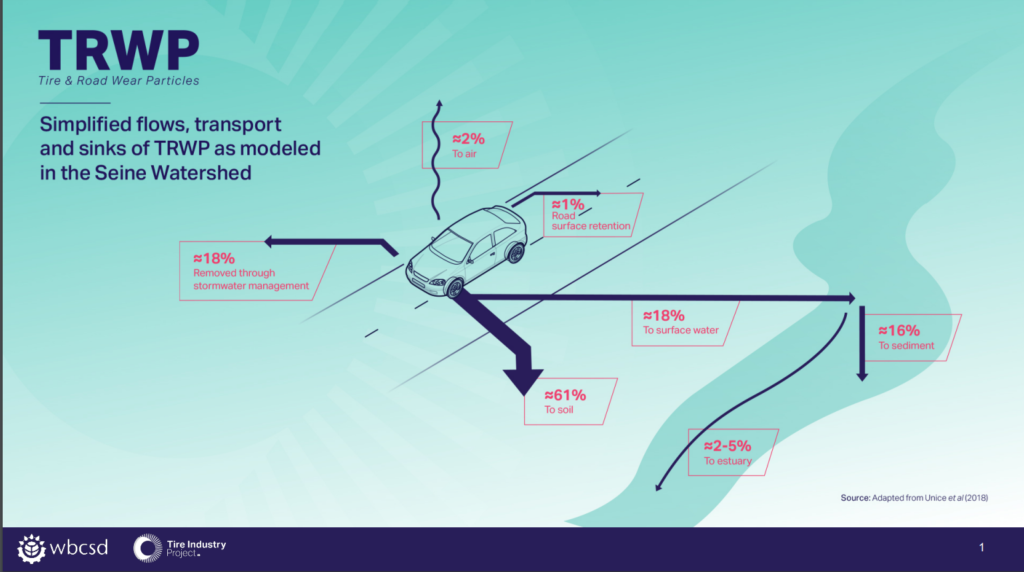How Keeping Your Tires Inflated Can Help the Environment
Basic Care Can Reduce Contamination
Checking tire pressure is a subtle yet impactful way to care for the environment. Chemicals and waste are released from aging tires into habitats, harming everything from soil needed for agriculture to fish populations. Learn how a regular tire pressure check improves the ecological footprint of EVs and internal combustion engines of all sizes.

When Tires Cause Environmental Harm
Fluctuating temperatures, constant pressure and friction from roadways alter tire psi marginally over time. The flatter the tire, the more drag occurs. Neglect results in damage and poor tread, producing more chemical and microparticle discharge. Keeping tires at their manufacturer-recommended psi is critical for reducing impact.
Regulatory bodies have overseen vehicle emissions for years, while these other environmental concerns remain barely attended despite a tire’s composition. They generally contain synthetic polymers, fossil fuel-based softeners and environmentally toxic additives.
Experts finally began putting tire and road wear particles (TRWPs) under a microscope. They jeopardize environments because research has been minimal and relies on inaccurate testing materials and scenarios. Recent attention reveals concentrates of TRWPs in river water and sediment, air, roadside soil and road runoff that cause ecotoxicological effects. Tire byproducts harm wildlife, but trophic transfer suggests harm to human health, too.
How Tire Waste Spreads
Popped tires and rubber debris are physical representations of how poorly maintained tires end up as waste, threatening wildlife and waterways.
Learning how to use equipment like air compressors and gauges to safely and productively fill tires to appropriate amounts is essential. However, degrading tires have a nearly invisible impact on the environment. For example, the particulate runoff is usually less than 1 millimeter.
EV enthusiasts and automotive mechanics alike will know of 6PPD-q. It is a critical chemical responsible for lengthening a tire’s life. However, the reinforcement comes at a price. When the chemical seeps off tires and into nature, it compromises the life spans of flora and fauna. Salmon and bivalves are only a few of the affected species. How tire runoff impacts phytoplankton is a more significant concern, given how reliant aquatic ecosystems are on them.
Tires release microplastics the more their condition deteriorates. The quality and state of the brakes affect how severely tires degrade, causing them to send off particles in larger quantities. Microplastics are pervasive enough that revolutionary global laws, such as the Euro 7 standards in the EU, seek to study and regulate them.

What Initiatives Strive for Eco-Conscious Tires
Up-and-coming standards signal the environmental impact of uninflated tires is becoming more prioritized. Researchers are performing more accurate testing and developing ways to make detecting particles in the wild easier. Traditional methods like spectroscopy are unreliable, and water sampling may prove more meaningful.
Companies work to forge a reimagined tire alongside monitoring and oversight efforts. It is an ideal advancement as EVs become a popular answer for transportation’s carbon footprint.
For example, Korean designers are considering how materials impact how much the tread releases microplastics. Their solution is a storage system that captures the microparticles as they release so they do not reach environments. Other companies seek alternative materials like guayule- and dandelion-based rubber.
Tire Care Is Environmental Care
Taking a few moments a month to check tire pressure and refilling as necessary could save species and habitats from unnecessary chemical and particle waste. Even if people cannot see their impact while driving, it happens constantly. Raising awareness mitigates complacency and encourages action because every air refill benefits local wildlife.

1 thought on “How Keeping Your Tires Inflated Can Help the Environment”